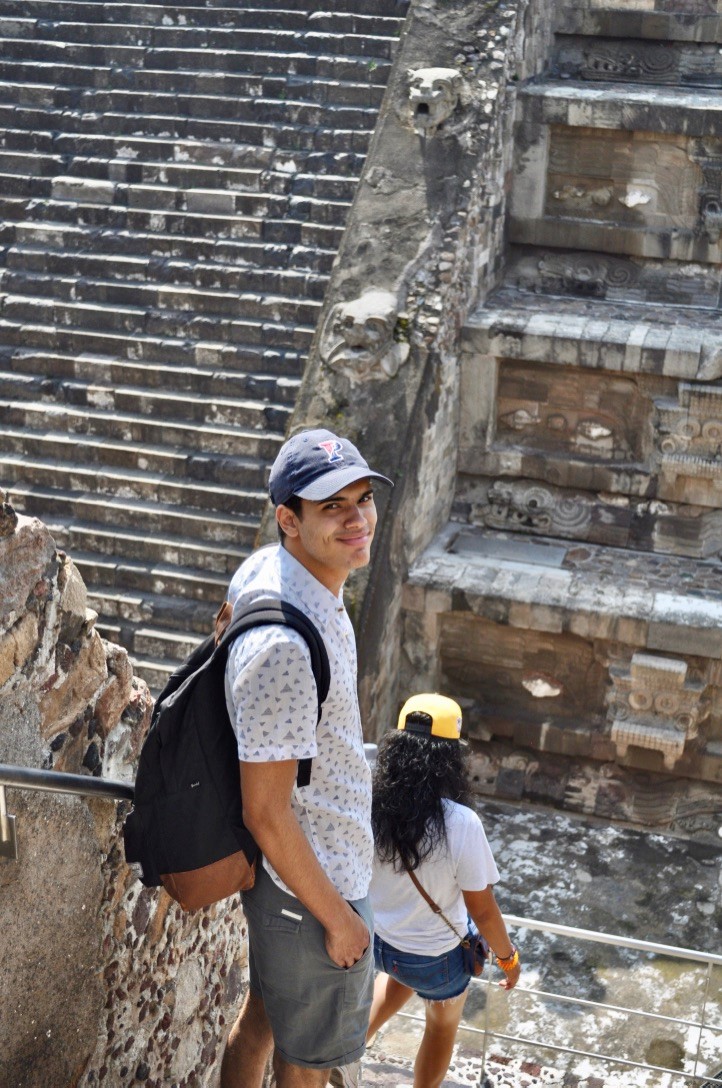Learning a New Skill
By: João Campos do Vale Dourado, CAS ’21

Ashoka – Mexico City, Mexico
I have been working at Ashoka in Mexico City for over a month now, and I can say for sure that it has been an incredibly rich learning experience. This is the first real job I have ever had, and it has been amazing to attend business meetings, create projects and monitor their development, interact with coworkers and have a real impact on the company as a whole. Ashoka is a global NGO that promotes social entrepreneurship in over 89 countries, whose work mainly involves finding and supporting social entrepreneurs around the world. It is one of the leading organizations in the social sector and working here has taught me a lot about not only NGOs and their functioning, but also about several different fields.
I am working in the ecosystems department; before coming here I had no idea what that meant, but since then I have learned a lot about the important work the department is responsible for. “Ecosystems” means that we, kind of obviously, work with the social entrepreneurship ecosystem in Mexico. What that means is that we map this ecosystem through different research initiatives and promote it through workshops and boot camps with social entrepreneurs. These boot camps help beginner entrepreneurs develop their projects and harness their business and social skills to boost their impact. I was personally involved in a project mapping Sinaloa, a state in northeastern Mexico, which involved doing research to find who the social entrepreneurs, their supporters and the organizations and companies working in the field there. However, most of the heavy research had been done in the months prior to my arrival at Ashoka, so I had to learn what the whole project was about and what its outcomes were as it was being developed. That task proved itself challenging at first given the importance of what I had to do: I was put up to compile all the information my bosses had found to prepare a presentation about the ecosystem, which they were going to deliver in Sinaloa to the field’s leaders and media agencies.
The bulk of my work consisted of creating an interactive map of the information they had collected using a specific data visualization platform I had never encountered before. The goal was to represent every actor they had mapped in the ecosystem with a dot and create connections and distinctions between them. This would aid people to see patterns and relationships in the ecosystem, as well as find actors and supporters working with a given thematic issue or within a geographical area. In all, this map would help create connections between people working with social entrepreneurship in Sinaloa and improve their work there–meaning it was a big responsibility I was given. The platform the people at Ashoka wanted me to use to create this map, Kumu, was very interesting and helpful in visualizing information, but no one in the office knew how to make it work at all, so I had to figure that out completely by myself. I read many manuals and watched video tutorials to learn how to make the information I input into the platform from an incredibly long and complex spreadsheet behave in the way I wanted it to. In the end, to make the connections, colors, sizes and placement of the actors in the most helpful way, I had to go through several “draft” maps and meetings with my bosses and ended up having to code a bit to make Kumu work. It was a very challenging experience which demanded a lot of time and effort, but it taught me a new, valuable and marketable skill and made me develop new senses of how to present data.
This work experience taught a lot about independence and resilience, how to figure stuff out myself in order to present to my bosses the results they wanted. There was no way around the task I was presented with–I had to find a way, and it involved self-learning and asking questions in equal amounts. After all that work, I presented something that my bosses were happy with and impressed by and the people they presented it to really liked. I was very proud of that achievement, and even more so later on: when another Ashoka staff needed to create a presentation, my boss referred her to me, saying I was the one who knew how to do it. She found Kumu extremely helpful to what she was doing–a snowball mapping presentation–and I helped her make the platform work for her goals. In the end, my boss asked me to write a guide on how to use Kumu for Ashoka’s purposes so that people in the future can use it for their presentations too. The realization that something I contributed to can have a lasting impact at Ashoka made me in equal parts happy and proud.
The Global Research and Internship Program (GRIP) provides outstanding undergraduate and graduate students the opportunity to intern or conduct research abroad for 8 to 12 weeks over the summer. Participants gain career-enhancing experience and global exposure that is essential in a global workforce. Placements and funding awards are available.